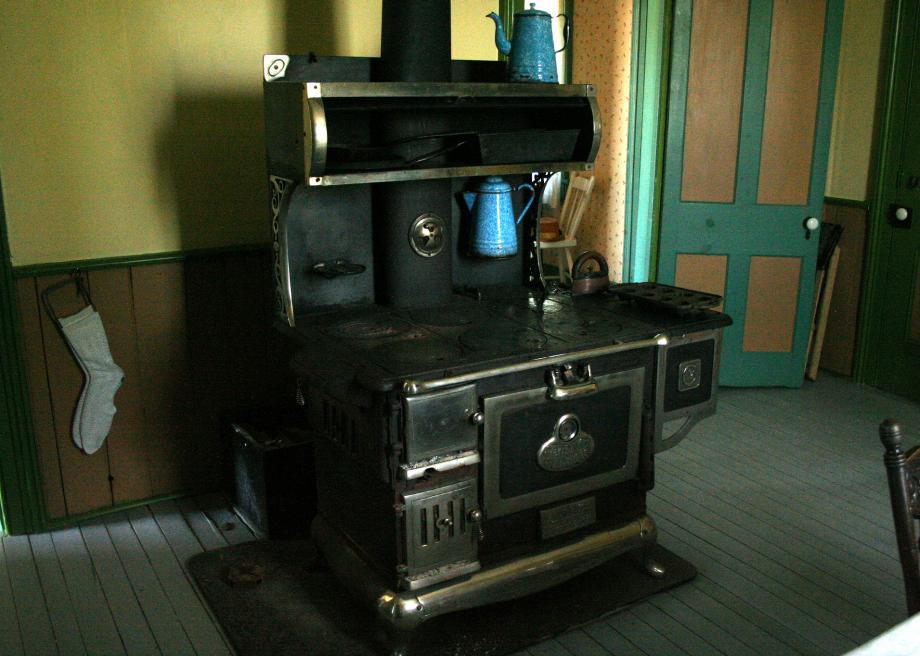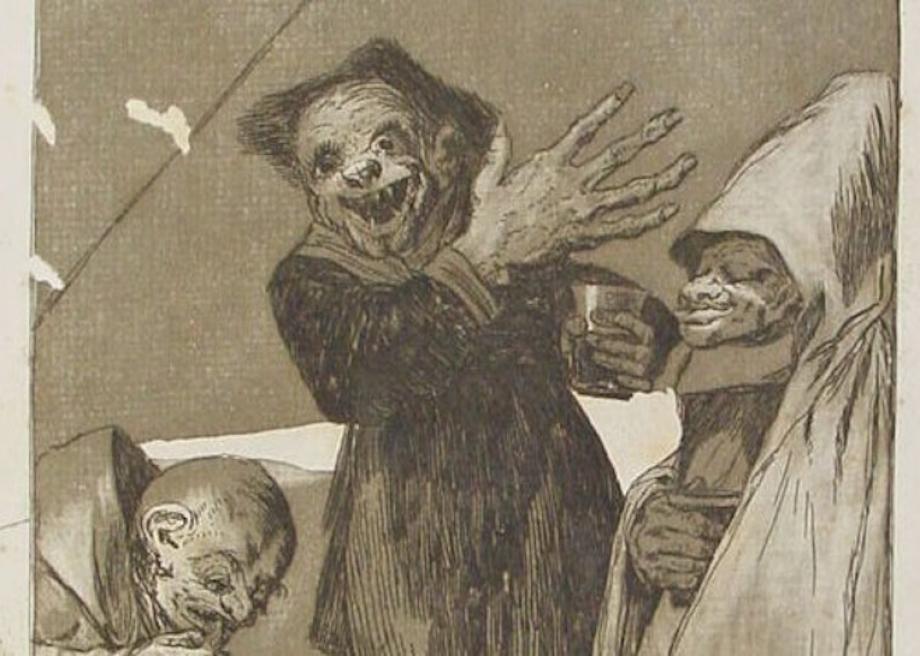Atlas Obscura on Slate is a blog about the world’s hidden wonders. Like us on Facebook and Tumblr, or follow us on Twitter.
The supernatural often seems to get a short shrift from government authorities, but that isn’t always the case. Or, at least, once, this wasn’t the case, because in 1930s Spain, the police, the military, and the international press were all summoned in response to the supposed voice of a goblin living in a residential stove.
The strange incident in Zaragoza, Spain in September of 1934 was finally blamed on “unconscious ventriloquism,” leaving one (probably) innocent woman slandered, and an entire city confused. (We scoured the almostdaily reports from the 1934 London Times for the story.)
The madness began on September 27th, 1934 in the second floor home of the Palazón family, who lived in an apartment building on what was then known as Gascón Gotor street. It was on that date that the family first began hearing strange screams, laughter, and voices that seemed to come from the walls of their kitchen, specifically from their stove or its chimney. The chimney connected to many other units in the building before escaping to the roof, so the logic was that it must have been coming from someone in the building. The roof itself was taller than any around it and too isolated to access easily.
The voice, male, did not seem to just be in the heads of the Palazón family either. When the Palazóns asked their their neighbors for help, they too would hear the voice when they came to the apartment, and word started to spread about the peculiar haunting on Gascón Gotor.
While most believed that the sounds were some kind of prank, both the practical observers and those who truly believed that the voice was of supernatural origin started thinking of the presence as a duende. The termduende translates roughly to “elf” or “goblin.” The beings come from Latin American folklore, and are analogous to fairies, sprites, or, well, goblins, in Western folklore. They are natural spirits that can have a range of traits or significance ranging from being benevolent pixies to mischievous boggarts depending on the tale. As it would turn out, the Zaragoza Duende was closer to the latter.
With the whole building aware of the voice coming from the supposed stove goblin, local interest in the house began to grow. Curious onlookers would crowd around outside the house to try and catch a snippet of the spirit’s conversation, and the befuddled Palazón family did not know what to do. In the month since the voice had begun appearing, it was said to both ask and answer questions, and took a particular interest in the Palazón’s young maid, Pascuala Alcocer. The voice would call out her name and and laugh maniacally.
Finally, with the family unable to root out the source of the disturbance or cope with its presence any longer, the Palazóns went to the police for help in mid-November of 1934. It is unknown whether the police would have gotten involved had local interest in the Zaragoza elf not been beginning to take on a tenor of hysteria. But with the authorities involved, the mystery voice became more popular than ever, and the crowds grew by the hundreds while the police investigated.
The befuddled police began investigating the stove, but their presence did not seem to faze the phantom. Officers would ask it questions it would unerringly answer. In their first piece on the Zaragoza goblin (titled A Polite Spanish Ghost, The Times would refer to the voice as the “Saragossa Ghost”), published in their November 24th, 1934 edition, theLondon Times reported that an “architect and some workmen” were then sent into the building to get to the bottom of the shameless voice. They searched every room from the cellar on up, but could find no evidence of a prankster or even where they might have hid. As one of the workers stood in front of the goblin stove, and said that the chimney opening should be measured, it was reported that the voice said simply, “You need not trouble, the diameter is just 6 inches.” Turns out the goblin was correct.

With still no answers as to the where the damn goblin could be, the building was completely evacuated and a team of police and volunteers began guarding the building morning and night, keeping a 30-yard perimeter around the home so that whatever mischief maker was behind the voice could not return. Doctors and psychologists were brought in, as well as a priest who sprinkled the stove with holy water. According to The Times, the voice spoke “incessantly.” Haunted sightseeing trips from nearby Bilbao began organizing, as answers grew more and more elusive.
Then suddenly, the voice went quiet. After two days of silence from the goblin, the local magistrate, who was eager to restore logic and order to the city, deemed the case to simply be an anomaly and the police withdrew. However, things were far from over.
Just two days after it had stopped all communication, the voice surprised a group of neighbors and visitors by suddenly exclaiming, “Cowards, cowards, cowards, here I am.” And just like that, the goblin was back. The police returned, but the Palazón family had had enough, and moved away from Zaragoza. The voice would taunt police, saying, “I am coming, I am coming.” (Although nothing ever appeared.)
Interest in the Zaragoza goblin was reaching a fever pitch. A Barcelona radio station tried to get someone to put a microphone in the room so they could broadcast the voice, and members of Scotland Yard were planning trips out to the apartment to try and solve the case. By November 30th, the Governor of Zaragoza had had enough, and called an end to all of the goblinoid silliness, asking the people to essentially settle down, and help find out who the prankster was.
Of course just saying a thing and making it true are not the same thing, so the governor took matters into his own hands.
On December 4th, the governor issued a statement that the perpetrator of the voice was none other than the young maid, Pascuala Alcocer, who he said had been performing the voice via something he called, “unconscious ventriloquism.” Understandably, Alcocer herself claimed to be completely unaware that she was apparently throwing her voice while in some sort of fugue state. The official who had been presiding over the investigations claimed to have seen it himself, vaguely explaining that it was the result of “a psychic phenomenon produced only in certain circumstances.”
Of course arguments were made that the young girl was nowhere near the premises when most of the strange talking occurred, but for the city officials, the matter was at an end and they were happy to move on. Now fingered as the perpetrator of the fraud, but with no evidence to arrest her (and really no interest in doing so), Alcocer was allowed to return to her hometown to get away from the judging eyes of those in Zaragoza.
The building eventually went back to relative normal. Although future tenants would still report ghostly sounds, it seemed that the goblin had left the building.
No culprit or explanation was ever settled on for who exactly was behind the elaborate Zaragoza goblin hoax, and the city seemed happy to try to forget the whole incident. Yet not all reminder of the goblin was erased. The original apartment building that held the goblin stove was demolished in 1977, but the new building that stands in its place still bears the name “Edificio Duende,” or “Goblin Building.”
This is a modified version of an article that originally appeared on Atlas Obscura.
